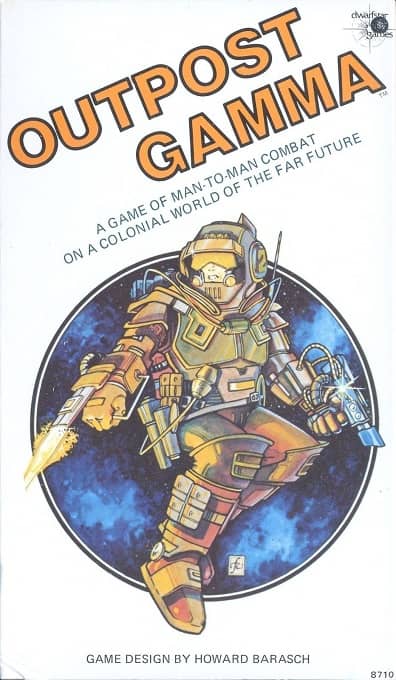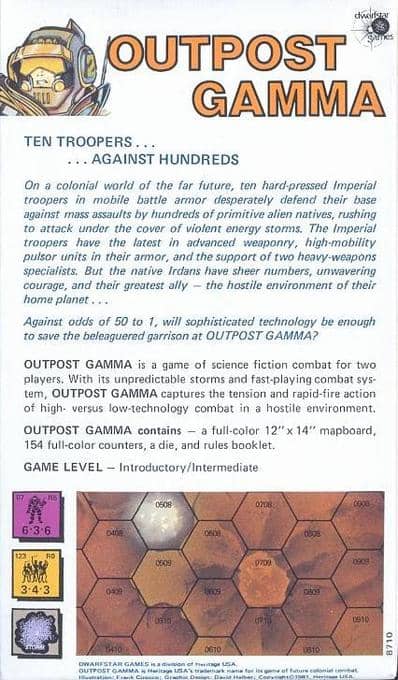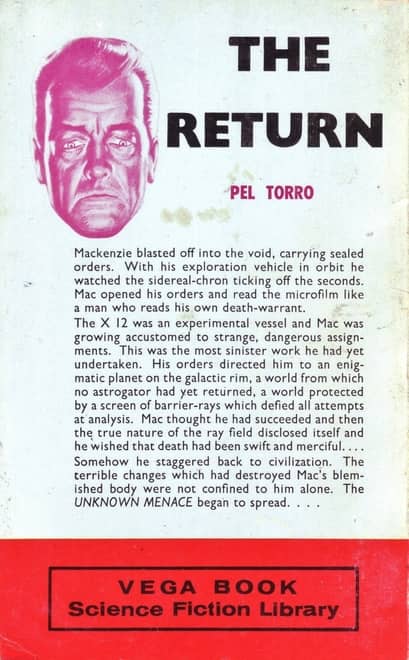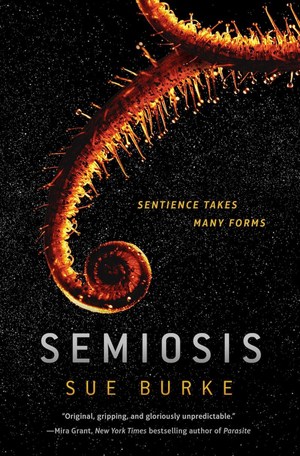Wargaming with my Twelve-Year-Old
 |
 |
It may be turning into an annual tradition here at the McLachlan-Alonso household–beating the Madrid heat by playing tabletop wargames. I first introduced my son to the concept of wargames with Soldiers 1918, an old Strategy & Tactics game.
This summer it was Outpost Gamma, an old Dwarfstar Games science fiction wargame available free online. Just download it, take it to your local printshop to get the board and chits on suitable card stock, and bingo! Old school fun.
This is a simple game, perfect for a kid who hasn’t done many wargames. The rules are clear and straightforward, and the game is pretty fast moving. Game time took about an hour.
Earthers have placed mining colonies on a distant planet ravaged by electrical storms. The native species isn’t too happy about it and decides to kick the miners and the space marines out. What results is basically a colonial warfare game, with a few heavily armed soldiers trying to beat off a superior force of poorly armed natives.


